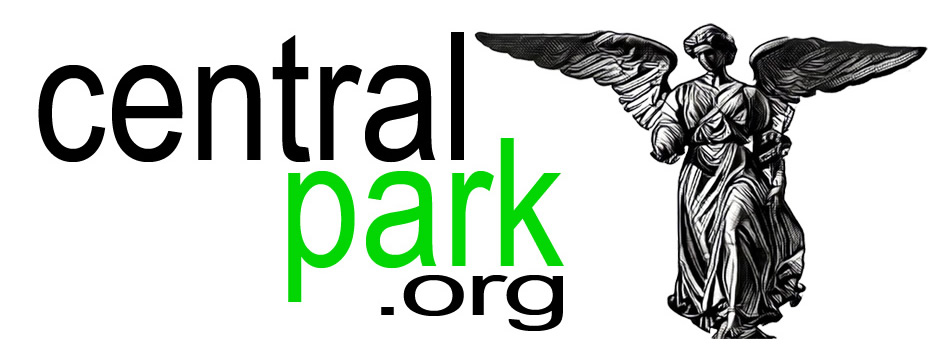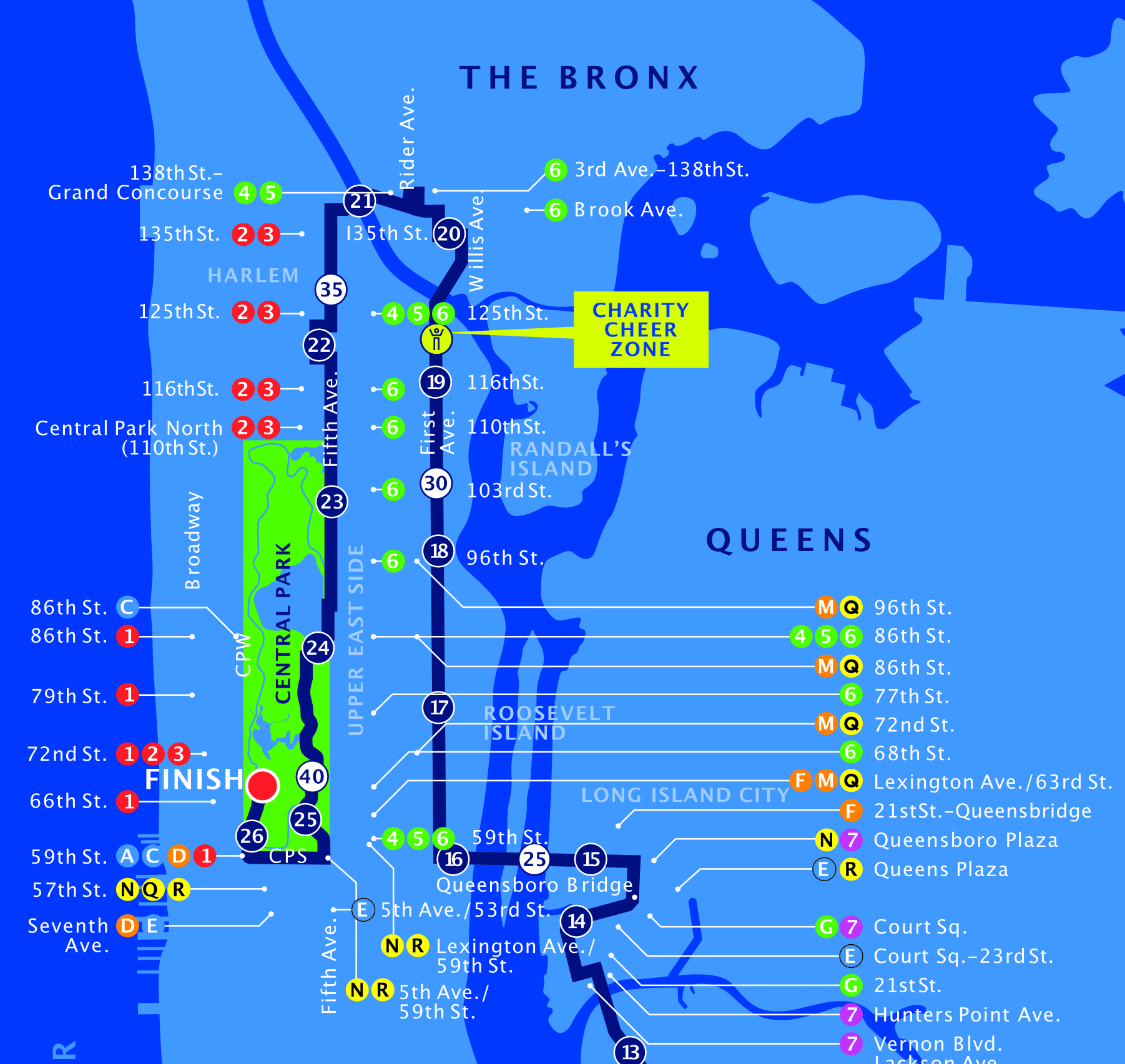The Marathon in Central Park
5th Avenue/Central Park
After a quick tour of the Bronx, the marathon course take runners down 5th Avenue along Central Park on the right and reenters the park at 90th St. The route continues down the East Dr. behind the Metropolitan Museum of Art, with the entire skyline of Manhattan beckoning the runners downtown.
Columbus Circle/Finish
At the end of mile 25 the course leaves the park and extends down Central Park South to Columbus Circle where
runners re-enter Central Park and head to the finish line at Tavern on the Green. An array of international flags line the final stretch, along with grandstands packed with cheering throngs.
History
The first New York City Marathon, organized in 1970 by Fred Lebow and Vince Chiappetta, was held entirely in Central Park. Of 127 entrants, only 55 men finished; the sole female entrant dropped out due to illness. Winners were given inexpensive wristwatches and recycled baseball and bowling trophies. The entry fee was $1 and the total event budget was $1,000.
In 1976, Lebow and 2,090 entrants took the New York City Marathon to the streets of the five boroughs in a moving celebration of sport and diversity. The course included five bridges, and winners Bill Rodgers and Miki Gorman shattered the event records.
Two years later, at the 1978 New York City Marathon, Grete Waitz of Norway, a track Olympian who’d never run farther than 12 miles,won the race in a world-record 2:32:30. Rodgers overcame 75-degree temperatures to become the race’s first three-time winner, and he added a fourth the next year, when Waitz broke her own world record.
In 1980, NCAA track champion Alberto Salazar boldly predicted that he would run sub-2:10 in his first marathon. He made good on his promise by winning in 2:09:41, the fastest-ever debut by an American, while Waitz captured her third straight victory and set another world record. Salazar won again in both 1981 and 1982.
The 1992 race produced perhaps the most poignant moment in New York City Marathon history when Lebow, in remission from brain cancer, crossed the line in 5:32:34 with Waitz by his side.
Shortly before the race’s 25th anniversary in 1994, Fred Lebow succumbed to cancer and Allan Steinfeld became race director. Gérman Silva of Mexico famously took a wrong turn into Central Park in the 26th mile and came back to win. Women’s champ Tegla Loroupe, a Kenyan, became the first female African winner of a major marathon.
The marathon has always been an exercise in community spirit, and that was especially true in November 2001, less than two months after the September 11 terrorist attacks. The race became a symbol of hope and renewal for participants, spectators, and all New Yorkers. Patriotism ran high as Deena Drossin (later Kastor) ran 2:26:58, the fastest debut by an American woman, to win the national title.
ING, a global financial services company, became the marathon’s first title sponsor in 2003 and joined with NYRR to initiate grassroots running and fitness programs among the city’s youth. Margaret Okayo of Kenya broke her own course record, running 2:22:31.
In 2004, world record-holder Paula Radcliffe of Great Britain won the women’s race by three seconds over Kenya’s Susan Chepkemei in the closest women’s finish in race history. Edith Hunkeler of Switzerland set a women’s wheelchair course record by six minutes.
The 2005 race saw yet another close finish as world record-holder Paul Tergat of Kenya edged defending champion Hendrick Ramaala of South Africa by a mere three-tenths of a second. Ernst Van Dyk of South Africa set a course record of 1:31:11 in winning the men’s wheelchair race, but it was smashed the next year by Kurt Fearnley of Australia, who set the current record of 1:29:22.
Martin Lel of Kenya won a second laurel wreath in 2007, the day after Ryan Hall ran 2:09:02 to win the U.S. Olympic Team Trials, hosted by NYRR in Central Park. In a front-running tour de force, Radcliffe led from the start and finally dropped Ethiopia’s Gete Wami with 400 meters remaining. In the women’s wheelchair race, Hunkeler smashed her own 2004 course record.
In 2008, Marilson Gomes dos Santos of Brazil won his second title (he’d been a surprise winner in 2006), and defending champion Radcliffe again took the lead from the gun and held on to win her third title; only Grete Waitz has more. Kara Goucher, in third, set an American marathon debut record of 2:25:53.
In 2009, the marathon’s 40th running, Meb Keflezighi became the first American winner since Alberto Salazar’s third win in 1982.
Still more records were set in 2011. Geoffrey Mutai of Kenya blasted away from the fastest field in race history and sliced two minutes and 31 seconds from Tesfaye Jifar’s 2001 record. Amanda McGrory cut two minutes and 14 seconds from Edith Wolf Hunkeler’s women’s wheelchair course mark with her 1:50:24, and Masazumi Soejima became the event’s first-ever Japanese champion when he took the men’s wheelchair race in 1:31:41. The total of 47,340 finishers was a new record, too.
The 2012 ING New York City Marathon was cancelled due to the effects of Superstorm Sandy. On Sunday, November 4, thousands of runners joined together to run in Central Park, and many others traveled to Staten Island and elsewhere in and around NYC to support recovery efforts.
The 2024 NYC Marathon promises to be another record setting event with more than 50,000 runners ready to participate.




